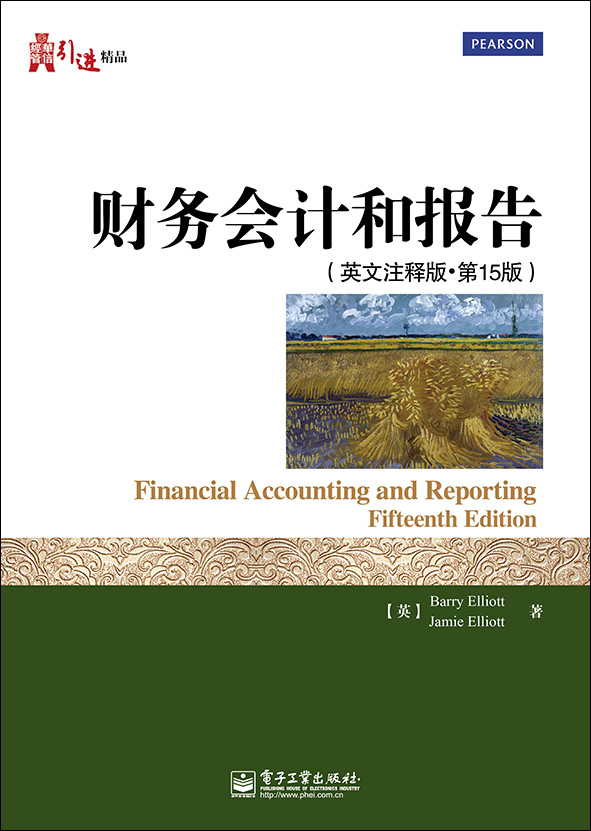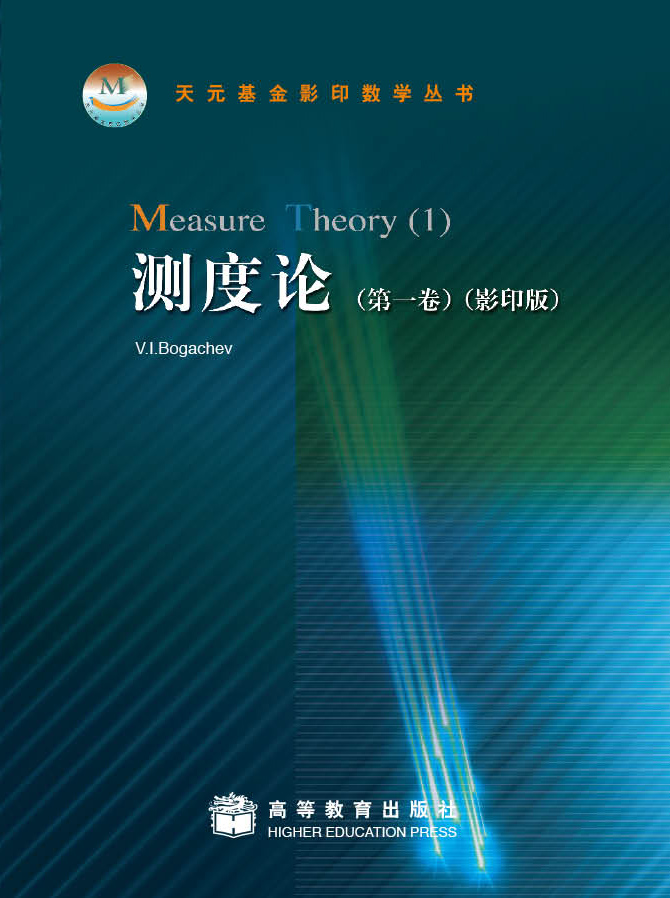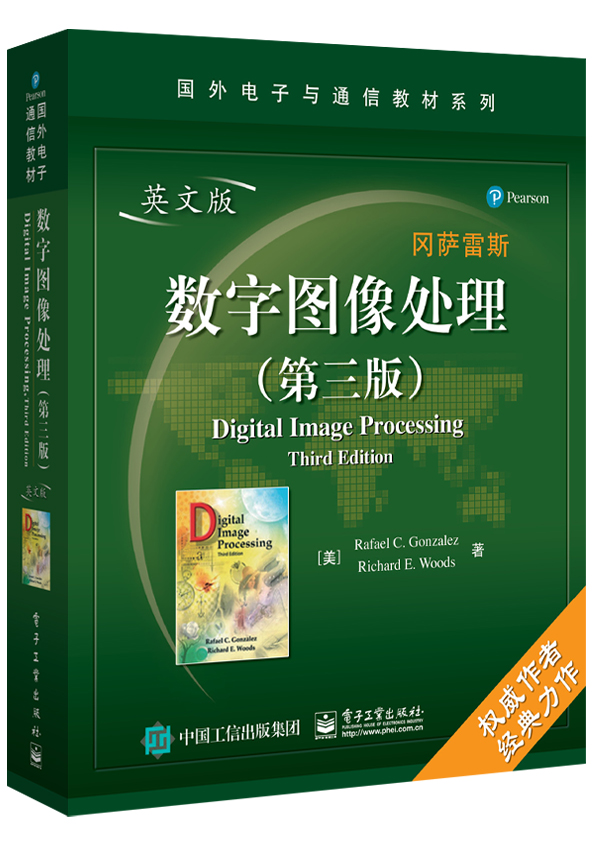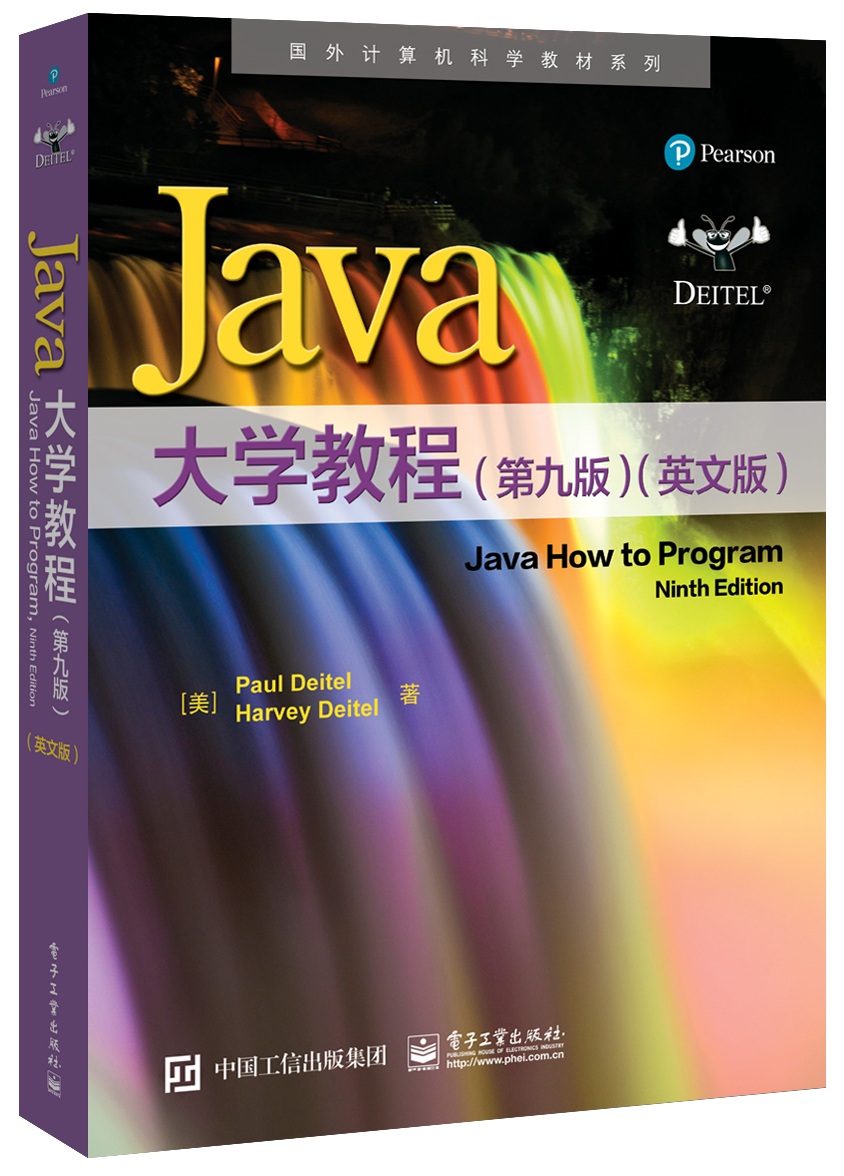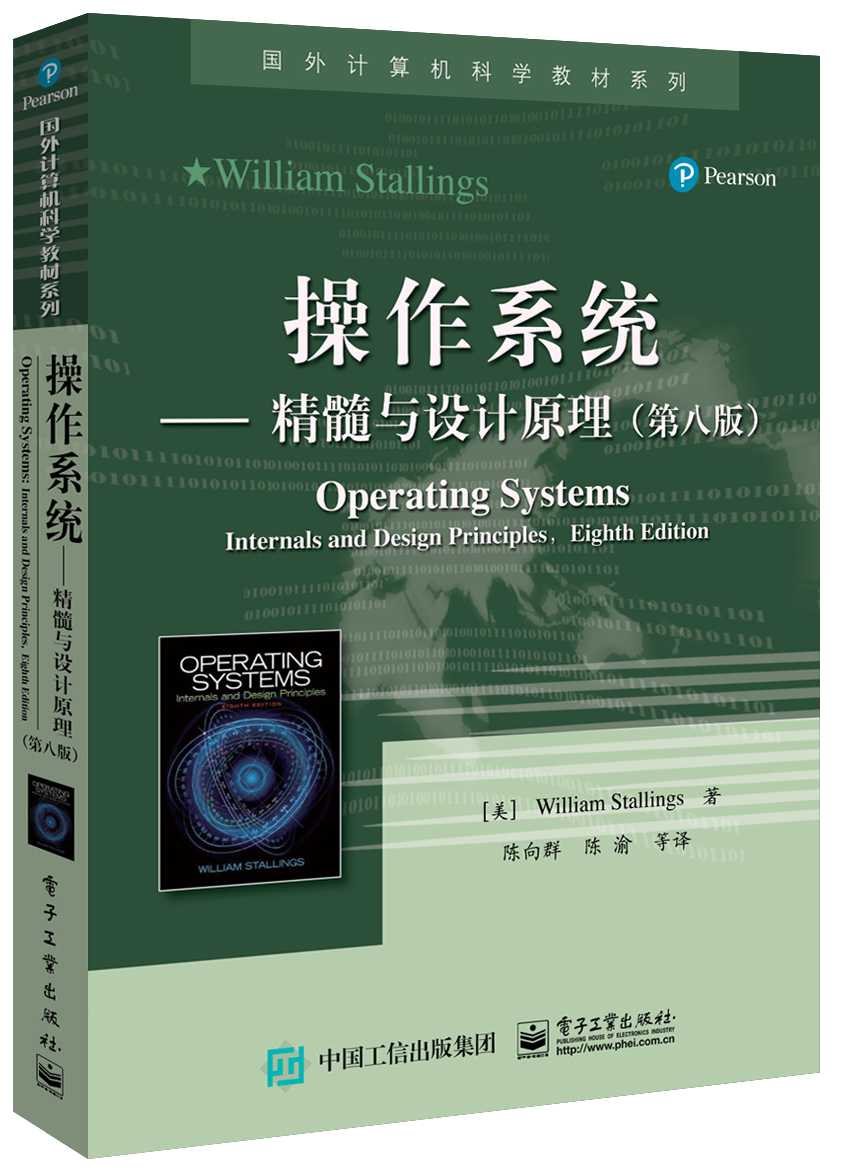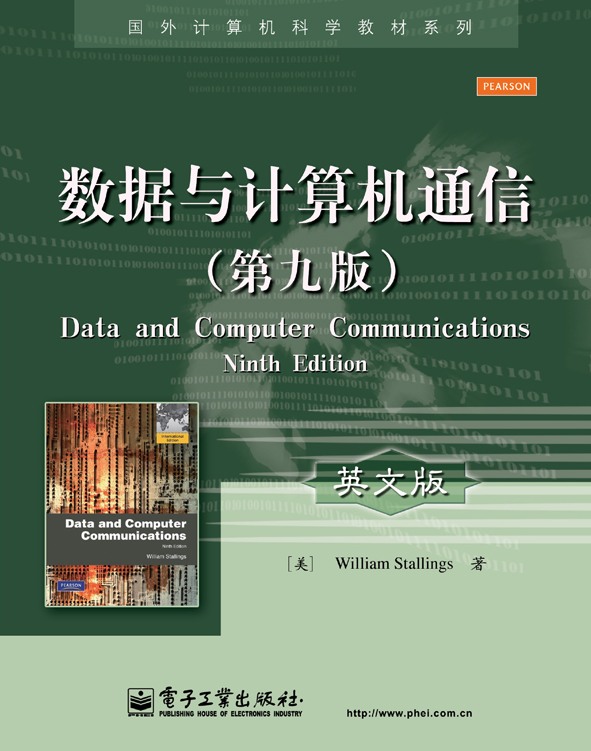- 电子工业出版社
- 9787121205002
- 1-1
- 350441
- 16开
- 2013-06
- 548
- 会计学
- 本科 研究生(硕士、EMBA、MBA、MPA、博士)
内容简介
本书旨在向读者呈现一个全面的会计准则体系及财务报告框架,以确保学生能够获得必要的会计学知识和技能。学生在对会计理论知识深入学习后不仅可以对当前的会计制度进行批判性的评价,还可以从基础理论的角度评估诸多改进性意见。本书主要包括:现行的国际会计准则(ISA)和国际财务报告准则(IFRS);公开报告中截选的会计案例;提纲挈领的复习题;不同难度的练习题;丰富的参考文献。
目录
Full contents
Part 1 Preparation of financial statements
Chapter 1 Accounting and reporting on
a cash flow basis 2
1.1 Introduction 2
1.2 Shareholders 2
1.3 What skills does an accountant require
in respect of external reports? 3
1.4 Managers 3
1.5 What skills does an accountant require
in respect of internal reports? 3
1.6 Procedural steps when reporting to
internal users 4
1.7 Agency costs2 6
1.8 Illustration of periodic financial
statements prepared under the cash
flow concept to disclose realised
operating cash flows 6
1.9 Illustration of preparation of statement
of financial position 10
1.10 Treatment of noncurrent assets in
the cash flow model 11
1.11 What are the characteristics of these
data that make them reliable? 12
1.12 Reports to external users 12
Summary 13
Review questions 14
References 14
Chapter 2 Accounting and reporting on
an accrual accounting basis 15
2.1 Introduction 15
2.2 Historical cost convention 16
2.3 Accrual basis of accounting 16
2.4 Mechanics of accrual accounting
adjusting cash receipts and payments 17
2.5 Subjective judgements required in
accrual accountingadjusting cash
payments in accordance with the
matching principle 17
2.6 Mechanics of accrual accountingthe
statement of financial position 18
2.7 Reformatting the statement of financial
position 18
2.8 Accounting for the sacrifice of
noncurrent assets 19
2.9 Reconciliation of cash flow and
accrual accounting data 22
Summary 23
Review questions 24
References 24
Chapter 3 Preparation of financial
statements 25
3.1 Introduction 25
3.2 Preparing an internal statement of
income from a trial balance 25
3.3 The format of statements of income
for publication 27
3.4 Other comprehensive income 29
3.5 Accounting for current tax 31
3.6 Presentation using IAS 1 Alternative
method (Format 2) 32
3.7 The statement of financial position 33
3.8 Statement of changes in equity 33
3.9 The accounting rules for asset valuation 34
3.10 The explanatory notes that accompany
a statement of financial position 35
3.11 Has prescribing the formats meant
that identical transactions are reported
identically? 37
3.12 What does an investor need in addition
to the financial statements to make
decisions? 39
3.13 ASB review of narrative reporting 44
3.14 What is meant by a fair view? 44
Summary 46
Review questions 46
References 47
Chapter 4 Annual Report: additional
financial statements 48
4.1 Introduction 48
4.2 The value added by segment reports 48
4.3 Detailed review and evaluation of
IRFS 8Operating Segments1 49
4.4 IFRS 5meaning of ‘held for sale’ 55
4.5 IFRS 5implications of classification
as held for sale 56
4.6 Meaning and disclosure of ‘discontinued
operations’ 56
4.7 IAS 10events after the reporting
period4 58
4.8 Related party disclosures 59
Summary 62
Review questions 63
References 63
Chapter 5 Statements of cash flows 64
5.1 Introduction 64
5.2 Development of statements of cash
flows 64
5.3 Applying IAS 7 (revised) Statements
of Cash Flows 66
5.4 Step approach to preparation of a statement
of cash flowsindirect method 68
5.5 Statement of cash flowsdirect method 70
5.6 Additional notes required by IAS 7 70
5.7 Analysing statements of cash flows 71
5.8 Critique of cash flow accounting 75
5.9 Summary proposal for change in
presentation of the financial statements 75
Summary 77
Review questions 77
References 78
Part 2 Income and asset value measurement systems
Chapter 6 Income and asset value
measurement: an economist’s
approach 80
6.1 Introduction 80
6.2 Role and objective of income
measurement 80
6.3 Accountant’s view of income, capital
and value 82
6.4 Critical comment on the accountant’s
measure 85
6.5 Economist’s view of income, capital
and value 86
6.6 Critical comment on the economist’s
measure 91
6.7 Income, capital and changing price
levels 91
Summary 93
Review questions 93
References 94
Bibliography 94
Chapter 7 Accounting for pricelevel
changes 95
7.1 Introduction 95
7.2 Review of the problems of historical cost
accounting (HCA) 95
7.3 Inflation accounting 95
7.4 The concepts in principle 96
7.5 The four models illustrated for a company
with cash purchases and sales 97
7.6 Critique of each model 100
7.7 Operating capital maintenance
a comprehensive example 103
7.8 Critique of CCA statements 112
7.9 The ASB approach 113
7.10 The IASC/IASB approach 115
7.11 Future developments 116
Summary 118
Review questions 118
References 118
Bibliography 119
Chapter 8 Revenue recognition 120
8.1 Introduction 120
8.2 The issues 120
8.3 The challenge 121
8.4 Revenue definedIAS 18 Revenue 121
8.5 Proposed IFRS 124
Summary 128
Review questions 129
References 130
Part 3 Regulatory framework – an attempt to achieve uniformity
Chapter 9 Financial reportingevolution of
global standards 132
9.1 Introduction 132
9.2 Why do we need financial reporting
standards? 132
9.3 Why do we need standards to be
mandatory? 133
9.4 Arguments in support of standards 134
9.5 Arguments against standards 135
9.6 Standard setting and enforcement in
the UK under the Financial Reporting
Council (FRC) 135
9.7 The Accounting Standards Board
(ASB) 136
9.8 The Financial Reporting Review Panel
(FRRP) 136
9.9 Standard setting and enforcement
in the US 137
9.10 Why have there been differences in
financial reporting? 139
9.11 Efforts to standardise financial
reports 143
9.12 What is the impact of changing
to IFRS? 145
9.13 Progress towards adoption by the USA
of international standards 146
9.14 Advantages and disadvantages of global
standards for publicly accountable
entities 147
9.15 How do reporting requirements differ
for nonpublicly accountable entities? 148
9.16 Does the need for standards and
effective enforcement still exist in
the 21st century? 151
9.17 Move towards a conceptual
framework 151
Summary 152
Review questions 152
References 153
Chapter 10 Conceptsevolution of a global
conceptual framework 155
10.1 Introduction 155
10.2 Historical overview of the evolution
of financial accounting theory 156
10.3 FASB Concepts Statements 159
10.4 IASC Framework for the Preparation
and Presentation of Financial
Statements 162
10.5 ASB Statement of Principles 19999 163
10.6 Conceptual framework developments 170
Summary 171
Review questions 173
References 173
Chapter 11 Ethical behaviour and
implications for accountants 175
11.1 Introduction 175
11.2 The meaning of ethical behaviour 175
11.3 The accounting standard setting process
and ethics 176
11.4 The IFAC Code of Ethics for
Professional Accountants 177
11.5 Implications of ethical values for the
principles versus rulesbased
approaches to accounting standards 179
11.6 Ethics in the accountants’ work
environmenta research report 182
11.7 Implications of unethical behaviour
for stakeholders using the financial
reports 183
11.8 The increasing role of whistle
blowing 188
11.9 The role of financial reporting
authorities 189
11.10 Why should students learn ethics? 191
Summary 192
Review questions 193
References 195
Part 4 Statement of financial positionequity, liability and asset
measurement and disclosure
Chapter 12 Share capital, distributable profits
and reduction of capital 198
12.1 Introduction 198
12.2 Common themes 198
12.3 Total owners’ equity: an overview 199
12.4 Total shareholders’ funds: more
detailed explanation 200
12.5 Accounting entries on issue of shares 203
12.6 Creditor protection: capital
maintenance concept 204
12.7 Creditor protection: why capital
maintenance rules are necessary 204
12.8 Creditor protection: how to quantify
the amounts available to meet
creditors’ claims 205
12.9 Issued share capital: minimum
share capital 205
12.10 Distributable profits: general
considerations 206
12.11 Distributable profits: how to arrive
at the amount using relevant
accounts 207
12.12 When may capital be reduced? 208
12.13 Writing off part of capital which
has already been lost and is not
represented by assets 208
12.14 Repayment of part of paidin capital
to shareholders or cancellation of
unpaid share capital 213
12.15 Purchase of own shares 213
Summary 215
Review questions 216
References 216
Chapter 13 Liabilities 217
13.1 Introduction 217
13.2 Provisionstheir impact on the
statement of financial position 217
13.3 ED IAS 37 Nonfinancial Liabilities 225
13.4 ED/2010/1 Measurement of Liabilities
in IAS 37 231
Summary 231
Review questions 231
References 232
Chapter 14 Financial instruments 233
14.1 Introduction 233
14.2 Financial instrumentsthe IASB’s
problem child 233
14.3 IAS 32 Financial Instruments:
Disclosure and Presentation1 235
14.4 IAS 39 Financial Instruments:
Recognition and Measurement 240
14.5 IFRS 7 Financial Statement
Disclosures6 249
14.6 Financial instruments developments 253
Summary 255
Review questions 256
References 256
Chapter 15 Employee benefits 257
15.1 Introduction 257
15.2 Greater employee interest in
pensions 257
15.3 Financial reporting implications 258
15.4 Types of scheme 258
15.5 Defined contribution pension
schemes 260
15.6 Defined benefit pension schemes 260
15.7 IAS 19 (revised) Employee Benefits 261
15.8 The liability for pension and
other postretirement costs 261
15.9 The statement of comprehensive
income 264
15.10 Comprehensive illustration 264
15.11 Plan curtailments and settlements 266
15.12 Multiemployer plans 266
15.13 Disclosures 267
15.14 Other longservice benefits 267
15.15 Shortterm benefits 268
15.16 Termination benefits8 268
15.17 Exposure draft of amendments
to IAS 19 269
15.18 IFRS 2 ShareBased Payment 270
15.19 Scope of IFRS 2 271
15.20 Recognition and measurement 271
15.21 Equitysettled sharebased
payments 271
15.22 Cashsettled sharebased payments 274
15.23 Transactions which may be settled
in cash or shares 275
15.24 IAS 26 Accounting and Reporting
by Retirement Benefit Plans 275
Summary 277
Review questions 278
References 278
Chapter 16 Taxation in company
accounts 279
16.1 Introduction 279
16.2 Corporation tax 279
16.3 Corporation tax systemsthe theoretical
background 280
16.4 Corporation tax systemsavoidance
and evasion 281
16.5 Corporation taxthe system from 6
April 1999 283
16.6 IFRS and taxation 285
16.7 IAS 12accounting for current
taxation 286
16.8 Deferred tax 287
16.9 FRS 19 (the UK standard on
deferred taxation) 294
16.10 A critique of deferred taxation 295
16.11 Examples of companies following
IAS 12 298
16.12 Value added tax (VAT) 299
Summary 299
Review questions 300
References 300
Chapter 17 Property, plant and
equipment (PPE) 302
17.1 Introduction 302
17.2 PPEconcepts and the relevant IASs
and IFRSs 302
17.3 What is PPE? 303
17.4 How is the cost of PPE determined? 303
17.5 What is depreciation? 305
17.6 What are the constituents
in the depreciation formula? 308
17.7 How is the useful life of an
asset determined? 308
17.8 Residual value 309
17.9 Calculation of depreciation 309
17.10 Measurement subsequent to initial
recognition 313
17.11 IAS 36 impairment of assets 315
17.12 IFRS 5 noncurrent assets held for
sale and discontinued operations 320
17.13 Disclosure requirements 321
17.14 Government grants towards
the cost of PPE 321
17.15 Investment properties 323
17.16 Effect of accounting policy for PPE
on the interpretation of the financial
statements 324
Summary 326
Review questions 326
References 327
Chapter 18 Leasing 328
18.1 Introduction 328
18.2 Background to leasing 328
18.3 Why was the IAS 17 approach
so controversial? 330
18.4 IAS 17classification of a lease 331
18.5 Accounting requirements for operating
leases 332
18.6 Accounting requirements for finance
leases 333
18.7 Example allocating the finance charge
using the sum of The digits method 333
18.8 Accounting for the lease of land
and buildings 337
18.9 Leasinga form of off balance
sheet financing 338
18.10 Accounting for leasesa new
approach 339
18.11 Accounting for leases by lessors 341
Summary 342
Review questions 342
References 343
Chapter 19 R&D; goodwill; intangible assets
and brands 344
19.1 Introduction 344
19.2 Accounting treatment for research
and development 344
19.3 Research and development 344
19.4 Why is research expenditure
not capitalised? 345
19.5 Capitalising development costs 346
19.6 The judgements to be made when
deciding whether to capitalise
development costs 347
19.7 Disclosure of R&D 348
19.8 IFRS for SMEs 348
19.9 Goodwill 349
19.10 The accounting treatment of goodwill 349
19.11 Critical comment on the various
methods that have been used to
account for goodwill 350
19.12 Negative goodwill 353
19.13 Intangible assets 353
19.14 Brand accounting 356
19.15 Justifications for reporting all
brands as assets 357
19.16 Accounting for acquired brands 358
19.17 Emissions trading 359
19.18 Intellectual property 361
19.19 Review of implementation of IFRS 3 364
Summary 366
Review questions 366
References 368
Chapter 20 Inventories 370
20.1 Introduction 370
20.2 Inventory defined 370
20.3 The controversy 370
20.4 IAS 2 Inventories 372
20.5 Inventory valuation 372
20.6 Workinprogress 378
20.7 Inventory control 380
20.8 Creative accounting 380
20.9 Audit of the yearend physical
inventory count 383
20.10 Published accounts 384
20.11 Agricultural activity 385
Summary 388
Review questions 388
References 389
Chapter 21 Construction contracts 390
21.1 Introduction 390
21.2 The need to replace IAS 11 Construction
Contracts1 390
21.3 Identification of contract revenue 391
21.4 Identification of contract costs 392
21.5 Proposed new accounting rules 393
21.6 Approach when a contract can be
separated into components 394
21.7 Accounting for a contract 395
21.8 Illustratedprofitable contract using
step approach 396
21.9 Illustratedlossmaking contract using
step approach 398
21.10 Developments in accounting for
revenue 398
21.11 Publicprivate partnerships (PPPs) 399
Summary 405
Review questions 406
References 406
Part 5 Consolidated accounts
Chapter 22 Accounting for groups at
the date of acquisition 408
22.1 Introduction 408
22.2 The definition of a group 408
22.3 Consolidated accounts and some reasons
for their Preparation 408
22.4 The definition of control 410
22.5 Alternative methods of preparing
consolidated accounts 411
22.6 The treatment of positive goodwill 413
22.7 The treatment of negative goodwill 413
22.8 The comparison between an acquisition
by cash and an exchange of shares 413
22.9 Noncontrolling interests 414
22.10 The treatment of differences between
a subsidiary’s fair value and book
value 416
22.11 How to calculate fair values 417
22.12 IFRS 10summary of significant
revisions 418
Summary 418
Review questions 419
References 420
Chapter 23 Preparation of consolidated
statements of financial position
after the date of acquisition 421
23.1 Introduction 421
23.2 Preand postacquisition profits/
losses 421
23.3 Intercompany balances 423
23.4 Unrealised profit on intercompany
sales 425
23.5 Provision for unrealised profit affecting
a noncontrolling interest 429
23.6 Uniform accounting policies and
reporting dates 429
23.7 How is the investment in subsidiaries
reported in the parent’s own statement
of financial position? 429
Summary 429
Review questions 429
References 430
Chapter 24 Preparation of consolidated
statements of comprehensive
income, changes in equity and
cash flows 431
24.1 Introduction 431
24.2 Preparation of a consolidated statement
of comprehensive incomethe Ante
Group 431
24.3 The statement of changes in equity
(SOCE)3 433
24.4 Other consolidation adjustments 434
24.5 Dividends or interest paid by
the subsidiary out of preacquisition
profits 435
24.6 A subsidiary acquired part of the
way through the year 435
24.7 Published format statement of
comprehensive income 437
24.8 Consolidated statements of cash
flows 438
Summary 439
Review questions 439
References 439
Chapter 25 Accounting for associates
and joint ventures 440
25.1 Introduction 440
25.2 Definitions of associates and of
significant influence 440
25.3 The treatment of associated companies
in consolidated Accounts 440
25.4 The Brill Groupthe equity method
illustrated 441
25.5 The treatment of provisions
for unrealised profits 443
25.6 The acquisition of an associate
partway through the year 443
25.7 Joint arrangements 444
Summary 446
Review questions 447
References 447
Chapter 26 Accounting for the effects of
changes in foreign exchange
rates under IAS 21 449
26.1 Introduction 449
26.2 The difference between conversion and
translation and the definition of a
foreign currency transaction 449
26.3 The functional currency 449
26.4 The presentation currency5 450
26.5 Monetary and nonmonetary items 450
26.6 The rules on the recording of foreign
currency transactions carried out
directly by the reporting entity 450
26.7 The treatment of exchange differences
on foreign currency transactions 451
26.8 Foreign exchange transactions in
the individual accounts of companies
illustratedBoil plc 451
26.9 The translation of the accounts of
foreign operations where the functional
currency is the same as that of the
parent 452
26.10 The use of a presentation currency
other than the functional currency 453
26.11 Granby Ltd illustration 454
26.12 Granby Ltd illustration continued 455
26.13 Implications of IAS 21 457
26.14 Critique of use of presentation
currency 457
Summary 457
Review questions 458
References 458
Part 6 Interpretation
Chapter 27 Earnings per share 460
27.1 Introduction 460
27.2 Why is the earnings per share figure
important? 460
27.3 How is the EPS figure calculated? 461
27.4 The use to shareholders of the EPS 462
27.5 Illustration of the basic EPS
calculation 463
27.6 Adjusting the number of shares used in
the basic EPS calculation 463
27.7 Rights issues 466
27.8 Adjusting the earnings and number of
shares used in the diluted EPS
calculation 470
27.9 Procedure where there are several
potential dilutions 472
27.10 Exercise of conversion rights during
financial year 473
27.11 Disclosure requirements of IAS 33 473
27.12 The Improvement Project 475
27.13 Convergence project 476
Summary 476
Review questions 476
References 478
Chapter 28 Review of financial ratio
analysis 479
28.1 Introduction 479
28.2 Initial impressions 479
28.3 What are accounting ratios? 480
28.4 Revision of key ratios 481
28.5 Key ratios for JD Wetherspoon 483
28.6 Comment on the current ratio 485
28.7 Interpreting the key ratiosJD
Wetherspoon 486
28.8 Description of subsidiary ratios 488
28.9 Limitations of ratio analysis 497
28.10 Earnings before interest, tax,
depreciation and amortization
(EBITDA) used for management
control purposes 500
Summary 501
Review questions 501
References 502
Chapter 29 Analytical analysisselective
use of ratios 503
29.1 Introduction 503
29.2 Improvement of information for
shareholders 503
29.3 Disclosure of risks and focus on relevant
ratios 505
29.4 Shariah compliant companieswhy ratios
are important 511
29.5 Ratios set by lenders in debt covenants 513
29.6 Predicting corporate failure 515
29.7 Performance related remuneration
shareholder returns 521
29.8 Valuing shares of an unquoted
companyquantitative process 524
29.9 Professional risk assessors 528
Summary 530
Review questions 531
References 531
Part 1 Preparation of financial statements
Chapter 1 Accounting and reporting on
a cash flow basis 2
1.1 Introduction 2
1.2 Shareholders 2
1.3 What skills does an accountant require
in respect of external reports? 3
1.4 Managers 3
1.5 What skills does an accountant require
in respect of internal reports? 3
1.6 Procedural steps when reporting to
internal users 4
1.7 Agency costs2 6
1.8 Illustration of periodic financial
statements prepared under the cash
flow concept to disclose realised
operating cash flows 6
1.9 Illustration of preparation of statement
of financial position 10
1.10 Treatment of noncurrent assets in
the cash flow model 11
1.11 What are the characteristics of these
data that make them reliable? 12
1.12 Reports to external users 12
Summary 13
Review questions 14
References 14
Chapter 2 Accounting and reporting on
an accrual accounting basis 15
2.1 Introduction 15
2.2 Historical cost convention 16
2.3 Accrual basis of accounting 16
2.4 Mechanics of accrual accounting
adjusting cash receipts and payments 17
2.5 Subjective judgements required in
accrual accountingadjusting cash
payments in accordance with the
matching principle 17
2.6 Mechanics of accrual accountingthe
statement of financial position 18
2.7 Reformatting the statement of financial
position 18
2.8 Accounting for the sacrifice of
noncurrent assets 19
2.9 Reconciliation of cash flow and
accrual accounting data 22
Summary 23
Review questions 24
References 24
Chapter 3 Preparation of financial
statements 25
3.1 Introduction 25
3.2 Preparing an internal statement of
income from a trial balance 25
3.3 The format of statements of income
for publication 27
3.4 Other comprehensive income 29
3.5 Accounting for current tax 31
3.6 Presentation using IAS 1 Alternative
method (Format 2) 32
3.7 The statement of financial position 33
3.8 Statement of changes in equity 33
3.9 The accounting rules for asset valuation 34
3.10 The explanatory notes that accompany
a statement of financial position 35
3.11 Has prescribing the formats meant
that identical transactions are reported
identically? 37
3.12 What does an investor need in addition
to the financial statements to make
decisions? 39
3.13 ASB review of narrative reporting 44
3.14 What is meant by a fair view? 44
Summary 46
Review questions 46
References 47
Chapter 4 Annual Report: additional
financial statements 48
4.1 Introduction 48
4.2 The value added by segment reports 48
4.3 Detailed review and evaluation of
IRFS 8Operating Segments1 49
4.4 IFRS 5meaning of ‘held for sale’ 55
4.5 IFRS 5implications of classification
as held for sale 56
4.6 Meaning and disclosure of ‘discontinued
operations’ 56
4.7 IAS 10events after the reporting
period4 58
4.8 Related party disclosures 59
Summary 62
Review questions 63
References 63
Chapter 5 Statements of cash flows 64
5.1 Introduction 64
5.2 Development of statements of cash
flows 64
5.3 Applying IAS 7 (revised) Statements
of Cash Flows 66
5.4 Step approach to preparation of a statement
of cash flowsindirect method 68
5.5 Statement of cash flowsdirect method 70
5.6 Additional notes required by IAS 7 70
5.7 Analysing statements of cash flows 71
5.8 Critique of cash flow accounting 75
5.9 Summary proposal for change in
presentation of the financial statements 75
Summary 77
Review questions 77
References 78
Part 2 Income and asset value measurement systems
Chapter 6 Income and asset value
measurement: an economist’s
approach 80
6.1 Introduction 80
6.2 Role and objective of income
measurement 80
6.3 Accountant’s view of income, capital
and value 82
6.4 Critical comment on the accountant’s
measure 85
6.5 Economist’s view of income, capital
and value 86
6.6 Critical comment on the economist’s
measure 91
6.7 Income, capital and changing price
levels 91
Summary 93
Review questions 93
References 94
Bibliography 94
Chapter 7 Accounting for pricelevel
changes 95
7.1 Introduction 95
7.2 Review of the problems of historical cost
accounting (HCA) 95
7.3 Inflation accounting 95
7.4 The concepts in principle 96
7.5 The four models illustrated for a company
with cash purchases and sales 97
7.6 Critique of each model 100
7.7 Operating capital maintenance
a comprehensive example 103
7.8 Critique of CCA statements 112
7.9 The ASB approach 113
7.10 The IASC/IASB approach 115
7.11 Future developments 116
Summary 118
Review questions 118
References 118
Bibliography 119
Chapter 8 Revenue recognition 120
8.1 Introduction 120
8.2 The issues 120
8.3 The challenge 121
8.4 Revenue definedIAS 18 Revenue 121
8.5 Proposed IFRS 124
Summary 128
Review questions 129
References 130
Part 3 Regulatory framework – an attempt to achieve uniformity
Chapter 9 Financial reportingevolution of
global standards 132
9.1 Introduction 132
9.2 Why do we need financial reporting
standards? 132
9.3 Why do we need standards to be
mandatory? 133
9.4 Arguments in support of standards 134
9.5 Arguments against standards 135
9.6 Standard setting and enforcement in
the UK under the Financial Reporting
Council (FRC) 135
9.7 The Accounting Standards Board
(ASB) 136
9.8 The Financial Reporting Review Panel
(FRRP) 136
9.9 Standard setting and enforcement
in the US 137
9.10 Why have there been differences in
financial reporting? 139
9.11 Efforts to standardise financial
reports 143
9.12 What is the impact of changing
to IFRS? 145
9.13 Progress towards adoption by the USA
of international standards 146
9.14 Advantages and disadvantages of global
standards for publicly accountable
entities 147
9.15 How do reporting requirements differ
for nonpublicly accountable entities? 148
9.16 Does the need for standards and
effective enforcement still exist in
the 21st century? 151
9.17 Move towards a conceptual
framework 151
Summary 152
Review questions 152
References 153
Chapter 10 Conceptsevolution of a global
conceptual framework 155
10.1 Introduction 155
10.2 Historical overview of the evolution
of financial accounting theory 156
10.3 FASB Concepts Statements 159
10.4 IASC Framework for the Preparation
and Presentation of Financial
Statements 162
10.5 ASB Statement of Principles 19999 163
10.6 Conceptual framework developments 170
Summary 171
Review questions 173
References 173
Chapter 11 Ethical behaviour and
implications for accountants 175
11.1 Introduction 175
11.2 The meaning of ethical behaviour 175
11.3 The accounting standard setting process
and ethics 176
11.4 The IFAC Code of Ethics for
Professional Accountants 177
11.5 Implications of ethical values for the
principles versus rulesbased
approaches to accounting standards 179
11.6 Ethics in the accountants’ work
environmenta research report 182
11.7 Implications of unethical behaviour
for stakeholders using the financial
reports 183
11.8 The increasing role of whistle
blowing 188
11.9 The role of financial reporting
authorities 189
11.10 Why should students learn ethics? 191
Summary 192
Review questions 193
References 195
Part 4 Statement of financial positionequity, liability and asset
measurement and disclosure
Chapter 12 Share capital, distributable profits
and reduction of capital 198
12.1 Introduction 198
12.2 Common themes 198
12.3 Total owners’ equity: an overview 199
12.4 Total shareholders’ funds: more
detailed explanation 200
12.5 Accounting entries on issue of shares 203
12.6 Creditor protection: capital
maintenance concept 204
12.7 Creditor protection: why capital
maintenance rules are necessary 204
12.8 Creditor protection: how to quantify
the amounts available to meet
creditors’ claims 205
12.9 Issued share capital: minimum
share capital 205
12.10 Distributable profits: general
considerations 206
12.11 Distributable profits: how to arrive
at the amount using relevant
accounts 207
12.12 When may capital be reduced? 208
12.13 Writing off part of capital which
has already been lost and is not
represented by assets 208
12.14 Repayment of part of paidin capital
to shareholders or cancellation of
unpaid share capital 213
12.15 Purchase of own shares 213
Summary 215
Review questions 216
References 216
Chapter 13 Liabilities 217
13.1 Introduction 217
13.2 Provisionstheir impact on the
statement of financial position 217
13.3 ED IAS 37 Nonfinancial Liabilities 225
13.4 ED/2010/1 Measurement of Liabilities
in IAS 37 231
Summary 231
Review questions 231
References 232
Chapter 14 Financial instruments 233
14.1 Introduction 233
14.2 Financial instrumentsthe IASB’s
problem child 233
14.3 IAS 32 Financial Instruments:
Disclosure and Presentation1 235
14.4 IAS 39 Financial Instruments:
Recognition and Measurement 240
14.5 IFRS 7 Financial Statement
Disclosures6 249
14.6 Financial instruments developments 253
Summary 255
Review questions 256
References 256
Chapter 15 Employee benefits 257
15.1 Introduction 257
15.2 Greater employee interest in
pensions 257
15.3 Financial reporting implications 258
15.4 Types of scheme 258
15.5 Defined contribution pension
schemes 260
15.6 Defined benefit pension schemes 260
15.7 IAS 19 (revised) Employee Benefits 261
15.8 The liability for pension and
other postretirement costs 261
15.9 The statement of comprehensive
income 264
15.10 Comprehensive illustration 264
15.11 Plan curtailments and settlements 266
15.12 Multiemployer plans 266
15.13 Disclosures 267
15.14 Other longservice benefits 267
15.15 Shortterm benefits 268
15.16 Termination benefits8 268
15.17 Exposure draft of amendments
to IAS 19 269
15.18 IFRS 2 ShareBased Payment 270
15.19 Scope of IFRS 2 271
15.20 Recognition and measurement 271
15.21 Equitysettled sharebased
payments 271
15.22 Cashsettled sharebased payments 274
15.23 Transactions which may be settled
in cash or shares 275
15.24 IAS 26 Accounting and Reporting
by Retirement Benefit Plans 275
Summary 277
Review questions 278
References 278
Chapter 16 Taxation in company
accounts 279
16.1 Introduction 279
16.2 Corporation tax 279
16.3 Corporation tax systemsthe theoretical
background 280
16.4 Corporation tax systemsavoidance
and evasion 281
16.5 Corporation taxthe system from 6
April 1999 283
16.6 IFRS and taxation 285
16.7 IAS 12accounting for current
taxation 286
16.8 Deferred tax 287
16.9 FRS 19 (the UK standard on
deferred taxation) 294
16.10 A critique of deferred taxation 295
16.11 Examples of companies following
IAS 12 298
16.12 Value added tax (VAT) 299
Summary 299
Review questions 300
References 300
Chapter 17 Property, plant and
equipment (PPE) 302
17.1 Introduction 302
17.2 PPEconcepts and the relevant IASs
and IFRSs 302
17.3 What is PPE? 303
17.4 How is the cost of PPE determined? 303
17.5 What is depreciation? 305
17.6 What are the constituents
in the depreciation formula? 308
17.7 How is the useful life of an
asset determined? 308
17.8 Residual value 309
17.9 Calculation of depreciation 309
17.10 Measurement subsequent to initial
recognition 313
17.11 IAS 36 impairment of assets 315
17.12 IFRS 5 noncurrent assets held for
sale and discontinued operations 320
17.13 Disclosure requirements 321
17.14 Government grants towards
the cost of PPE 321
17.15 Investment properties 323
17.16 Effect of accounting policy for PPE
on the interpretation of the financial
statements 324
Summary 326
Review questions 326
References 327
Chapter 18 Leasing 328
18.1 Introduction 328
18.2 Background to leasing 328
18.3 Why was the IAS 17 approach
so controversial? 330
18.4 IAS 17classification of a lease 331
18.5 Accounting requirements for operating
leases 332
18.6 Accounting requirements for finance
leases 333
18.7 Example allocating the finance charge
using the sum of The digits method 333
18.8 Accounting for the lease of land
and buildings 337
18.9 Leasinga form of off balance
sheet financing 338
18.10 Accounting for leasesa new
approach 339
18.11 Accounting for leases by lessors 341
Summary 342
Review questions 342
References 343
Chapter 19 R&D; goodwill; intangible assets
and brands 344
19.1 Introduction 344
19.2 Accounting treatment for research
and development 344
19.3 Research and development 344
19.4 Why is research expenditure
not capitalised? 345
19.5 Capitalising development costs 346
19.6 The judgements to be made when
deciding whether to capitalise
development costs 347
19.7 Disclosure of R&D 348
19.8 IFRS for SMEs 348
19.9 Goodwill 349
19.10 The accounting treatment of goodwill 349
19.11 Critical comment on the various
methods that have been used to
account for goodwill 350
19.12 Negative goodwill 353
19.13 Intangible assets 353
19.14 Brand accounting 356
19.15 Justifications for reporting all
brands as assets 357
19.16 Accounting for acquired brands 358
19.17 Emissions trading 359
19.18 Intellectual property 361
19.19 Review of implementation of IFRS 3 364
Summary 366
Review questions 366
References 368
Chapter 20 Inventories 370
20.1 Introduction 370
20.2 Inventory defined 370
20.3 The controversy 370
20.4 IAS 2 Inventories 372
20.5 Inventory valuation 372
20.6 Workinprogress 378
20.7 Inventory control 380
20.8 Creative accounting 380
20.9 Audit of the yearend physical
inventory count 383
20.10 Published accounts 384
20.11 Agricultural activity 385
Summary 388
Review questions 388
References 389
Chapter 21 Construction contracts 390
21.1 Introduction 390
21.2 The need to replace IAS 11 Construction
Contracts1 390
21.3 Identification of contract revenue 391
21.4 Identification of contract costs 392
21.5 Proposed new accounting rules 393
21.6 Approach when a contract can be
separated into components 394
21.7 Accounting for a contract 395
21.8 Illustratedprofitable contract using
step approach 396
21.9 Illustratedlossmaking contract using
step approach 398
21.10 Developments in accounting for
revenue 398
21.11 Publicprivate partnerships (PPPs) 399
Summary 405
Review questions 406
References 406
Part 5 Consolidated accounts
Chapter 22 Accounting for groups at
the date of acquisition 408
22.1 Introduction 408
22.2 The definition of a group 408
22.3 Consolidated accounts and some reasons
for their Preparation 408
22.4 The definition of control 410
22.5 Alternative methods of preparing
consolidated accounts 411
22.6 The treatment of positive goodwill 413
22.7 The treatment of negative goodwill 413
22.8 The comparison between an acquisition
by cash and an exchange of shares 413
22.9 Noncontrolling interests 414
22.10 The treatment of differences between
a subsidiary’s fair value and book
value 416
22.11 How to calculate fair values 417
22.12 IFRS 10summary of significant
revisions 418
Summary 418
Review questions 419
References 420
Chapter 23 Preparation of consolidated
statements of financial position
after the date of acquisition 421
23.1 Introduction 421
23.2 Preand postacquisition profits/
losses 421
23.3 Intercompany balances 423
23.4 Unrealised profit on intercompany
sales 425
23.5 Provision for unrealised profit affecting
a noncontrolling interest 429
23.6 Uniform accounting policies and
reporting dates 429
23.7 How is the investment in subsidiaries
reported in the parent’s own statement
of financial position? 429
Summary 429
Review questions 429
References 430
Chapter 24 Preparation of consolidated
statements of comprehensive
income, changes in equity and
cash flows 431
24.1 Introduction 431
24.2 Preparation of a consolidated statement
of comprehensive incomethe Ante
Group 431
24.3 The statement of changes in equity
(SOCE)3 433
24.4 Other consolidation adjustments 434
24.5 Dividends or interest paid by
the subsidiary out of preacquisition
profits 435
24.6 A subsidiary acquired part of the
way through the year 435
24.7 Published format statement of
comprehensive income 437
24.8 Consolidated statements of cash
flows 438
Summary 439
Review questions 439
References 439
Chapter 25 Accounting for associates
and joint ventures 440
25.1 Introduction 440
25.2 Definitions of associates and of
significant influence 440
25.3 The treatment of associated companies
in consolidated Accounts 440
25.4 The Brill Groupthe equity method
illustrated 441
25.5 The treatment of provisions
for unrealised profits 443
25.6 The acquisition of an associate
partway through the year 443
25.7 Joint arrangements 444
Summary 446
Review questions 447
References 447
Chapter 26 Accounting for the effects of
changes in foreign exchange
rates under IAS 21 449
26.1 Introduction 449
26.2 The difference between conversion and
translation and the definition of a
foreign currency transaction 449
26.3 The functional currency 449
26.4 The presentation currency5 450
26.5 Monetary and nonmonetary items 450
26.6 The rules on the recording of foreign
currency transactions carried out
directly by the reporting entity 450
26.7 The treatment of exchange differences
on foreign currency transactions 451
26.8 Foreign exchange transactions in
the individual accounts of companies
illustratedBoil plc 451
26.9 The translation of the accounts of
foreign operations where the functional
currency is the same as that of the
parent 452
26.10 The use of a presentation currency
other than the functional currency 453
26.11 Granby Ltd illustration 454
26.12 Granby Ltd illustration continued 455
26.13 Implications of IAS 21 457
26.14 Critique of use of presentation
currency 457
Summary 457
Review questions 458
References 458
Part 6 Interpretation
Chapter 27 Earnings per share 460
27.1 Introduction 460
27.2 Why is the earnings per share figure
important? 460
27.3 How is the EPS figure calculated? 461
27.4 The use to shareholders of the EPS 462
27.5 Illustration of the basic EPS
calculation 463
27.6 Adjusting the number of shares used in
the basic EPS calculation 463
27.7 Rights issues 466
27.8 Adjusting the earnings and number of
shares used in the diluted EPS
calculation 470
27.9 Procedure where there are several
potential dilutions 472
27.10 Exercise of conversion rights during
financial year 473
27.11 Disclosure requirements of IAS 33 473
27.12 The Improvement Project 475
27.13 Convergence project 476
Summary 476
Review questions 476
References 478
Chapter 28 Review of financial ratio
analysis 479
28.1 Introduction 479
28.2 Initial impressions 479
28.3 What are accounting ratios? 480
28.4 Revision of key ratios 481
28.5 Key ratios for JD Wetherspoon 483
28.6 Comment on the current ratio 485
28.7 Interpreting the key ratiosJD
Wetherspoon 486
28.8 Description of subsidiary ratios 488
28.9 Limitations of ratio analysis 497
28.10 Earnings before interest, tax,
depreciation and amortization
(EBITDA) used for management
control purposes 500
Summary 501
Review questions 501
References 502
Chapter 29 Analytical analysisselective
use of ratios 503
29.1 Introduction 503
29.2 Improvement of information for
shareholders 503
29.3 Disclosure of risks and focus on relevant
ratios 505
29.4 Shariah compliant companieswhy ratios
are important 511
29.5 Ratios set by lenders in debt covenants 513
29.6 Predicting corporate failure 515
29.7 Performance related remuneration
shareholder returns 521
29.8 Valuing shares of an unquoted
companyquantitative process 524
29.9 Professional risk assessors 528
Summary 530
Review questions 531
References 531

